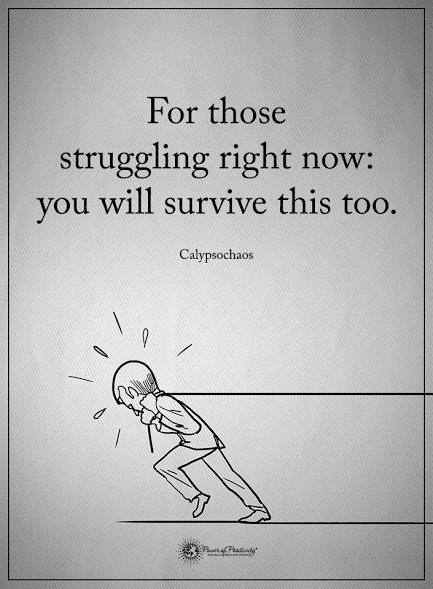Depression is a common mental disorder. Globally, more than 300 million people of all ages suffer from depression. (It) is the leading cause of disability worldwide, and is a major contributor to the overall global burden of disease. – The World Health Organization
Frustration and Bafflement
When a person experiences the symptoms of depression, they’re scared, frustrated and baffled all at the same time. (This writer has experience, and can testify to this common reaction.)
Consider this explanation of the causes of depression from the World Health Organization (WHO): “Depression results from a complex interaction of social, psychological and biological factors.” In other words, depression can originate from societal factors, and some underlying problem with the brain and/or body.
This doesn’t tell us much.
One thing scientists have come to a consensus about is people who experience an “adverse life event (unemployment, bereavement, psychological trauma)” are at a higher risk of developing depression. Sadly, depression’s effects on a person’s mind are far-reaching. Every thought seems cloudy. Life seems pointless.
And people don’t know why the hell it’s happening to them.
As a writer, it’s never a joyous occasion to write about depression. However, there is comfort in knowing that this article may provide some answers to someone who desperately needs them. On that note, we’re going to have a series of articles about depression types; including the causes, symptoms, and treatments of each type.
In this article, we focus on the three most prominent kinds of depression.
The 5 Main Symptoms Of Major, Chronic, and Manic Depression
1. Major Depressive Disorder
Major Depressive Disorder, or MDD, is a constant feeling of hopelessness and despair. MDD patients commonly report that the disorder makes it difficult for them to eat, sleep, study, work, or participate in once-enjoyable activities.
There is a genetic component to MDD, although many cases exist wherein a person develops the illness with no family history. As such, environmental factors and life events – such as those described above – can trigger MDD.
The five main symptoms of MDD are:
– Feelings of worthlessness or guilt
– Feeling overwhelmed with sadness or despair
– Impaired concentration and decisiveness
– Diminished pleasure in once-enjoyable activities
– Fatigue or lacking energy nearly every day
The culmination of severe symptoms may result in suicidal ideations (please see the end of the article for more information.)
Common triggers of MDD include:
– Loss of a loved one through death, divorce or separation
– Social isolation
– Major life changes, such as a graduation, job change, moving, or retirement
– Personal conflicts in relationships
– Emotional, physical or sexual abuse
Treatment of MDD (or clinical depression) usually requires one or more of the following: antidepressant medication, psychotherapy, and electroconvulsive (ECT) or shock therapy (only used in severe cases or if medicine proves ineffective.)
2. Dysthymia (i.e. Chronic Depression)
Dysthymia, also known as “mild” and/or “chronic” depression is a variation of depression that lasts two years of more. Generally, people diagnosed with dysthymia are considered to be suffering from mild symptoms. In many instances, the symptoms last longer than other types.
The major symptoms of dysthymia include:
– Loss of enjoyment in once-pleasurable things
– Consistent sadness or depressed mood
– Loss of energy or fatigue
– Insomnia or excessive sleep
– Problems with concentration and/or making decisions
Treatment of dysthymia is not as rigorous or problematic as MDD (and many other types). Talk therapy and antidepressants are by far the more common treatments prescribed.
3. Manic Depression (Bipolar Disorder)
Manic depression, now referred to as bipolar disorder, is a condition which causes the patient to experience “extreme highs” followed by “extreme lows.” The individual will often feel extreme levels of energy that causes severe adverse effects.
Known as a state of mania, the patient can experience “sleeplessness [sometimes for days], along with hallucinations, psychosis, grandiose delusions, or paranoid rage.”
Of all depression types, manic depression is considered the most difficult to treat. The illness is also thought to inflict the most distress onto the patient. More than 90 percent of individuals with bipolar I disorder, the most serious, have at least one psychiatric hospitalization.
The depressive symptoms of manic depression mirror those of MDD. The manic symptoms are what distinguishes the disease, and differs between the two types (bipolar I and bipolar II.) Bipolar I manic symptoms include:
– Detached and racing thoughts
– Grandiose beliefs
– Irregular elation or euphoria
– Irregular irritability
– Random (very high) energy spikes
Bipolar II, the less-serious form of manic depression (“milder periods of elation” and “an absence of psychosis [delusions or hallucinations]”) includes the following manic symptoms:
– Decreased need for sleep
– Extreme focus on projects at work or at home
– Exuberant and elated mood
– Reckless behavior
– Increased creativity and productivity
Treatment of manic depression involves the use of mood stabilizers such as lithium). In place of lithium, the physician may prescribe an anticonvulsant (anti-seizure), antipsychotic, or benzodiazepine (to induce relaxation).

If you or someone you know have thoughts of suicide, please contact the National Suicide Prevention Lifeline at 1-800-273-8255, which is available 24 hours every day. The website is https://suicidepreventionlifeline.org
(C)Power of Positivity, LLC. All rights reserved
References:
Grohol, J. (2016). Warning Signs & Types of Depression. Psych Central Retrieved from https://psychcentral.com/lib/types-and-symptoms-of-depression/
WebMD. (2016). Bipolar Disorder. Retrieved from http://www.webmd.com/depression/guide/bipolar-disorder-manic-depression#1
WebMD. (2017). Dysthymia (Mild, Chronic Depression). Retrieved from http://www.webmd.com/depression/guide/chronic-depression-dysthymia#1
WedMD. (2016). Major Depression (Clinical Depression). Retrieved from http://www.webmd.com/depression/guide/major-depression#1
World Health Organization. (2017, February). Depression. Retrieved from http://www.who.int/mediacentre/factsheets/fs369/en/
The post The 5 Main Symptoms Of Chronic, Major and Manic Depression appeared first on Power of Positivity: Positive Thinking & Attitude.
【Top 10 Malaysia & Singapore Most Beautiful Girls】Have you follow?